 By: Claudia González Brambila and Daniela Ruiz Massieu
By: Claudia González Brambila and Daniela Ruiz Massieu
“A failure can still blossom into a great wonder”
- Anonymous
Mexico joins other countries in its conviction that the creation of new businesses is a way to spur more dynamic economic and social development. For this reason, various government agencies support the creation of businesses, particularly those with high growth potential and the ability to create value. New companies have shown that they stimulate the economy by paying taxes, and these resources are what the government uses for infrastructure and services, that in turn create jobs and greater consumption – all which result in a virtuous circle.
It is also known that countries with entrepreneurship support programs have higher rates of business creation. (Acs y Laszlo, 2007; Peng et al., 2009; Peng et al., 2008).
However, people who decide to launch new businesses run great risks. All entrepreneurs hope to be successful, but many fail in their first attempts. According to BBC México (2010) and the SME community of The Economist (2012), each year 200,000 new businesses are started in Mexico, but about 80 percent close before their second year. And more than 50 percent of those companies that survive suspend operations before five years.
There are many causes for failures. Among the most common are a lack of knowledge of the market, a lack of planning, a weak business model, and the lack of expertise in managing a company. Making mistakes is inevitable; we have all experienced failure. However, in the case of entrepreneurship, failing is part of the process and can yield great benefits. When entrepreneurs learn from their mistakes, the possibility of failure decreases dramatically after the first couple attempts. In fact, failure can have very positive results if, when analyzing its causes, the support programs have a direct impact on the causes and generate important information about the entrepreneurship initiatives that do not work. (Hoetker y Agarwal, 2007; Knott y Posen, 2005).
Therefore, if we can benefit from failure, why are we so reluctant to fail? Why not try to understand, manage and learn from our mistakes? Why not help entrepreneurs learn to fail, recover and try again in search of that much coveted success?
Errors should also be seen as a source of innovation.
Many important technological advances have come about as the consequence of what has been learned from mistakes. For example, 3M’s successful product, Post-it, is the result of an error by Spence Silver, a scientist who worked at a company in 1968 and tried to invent glue with a high degree of adherence. The product he invented was a “failure” for a while, until Art Fry, another scientist at 3M, found a useful application for the product in 1974. Both could not image the extraordinary success it would be.
Another important example is Viagra, a product that failed in a particular area, but was very successful in another. What we now know as Viagra is the result of the work of Simon Campbell and David Roberts, two researchers from the pharmaceutical company Pfizer, who in 1985 sought a compound that could control high blood pressure. Seven years later, they concluded that it didn’t work for vascular problems, but the secondary effect produced in volunteer patients could be commercially lucrative.
Not all countries embrace a culture of acceptance of failure in the business world. On one end is Japan, where suicide is the third leading cause of death among entrepreneurs who failed in a business venture. The other end is the United States, where the probability of obtaining a bank loan is higher if the entrepreneur has already had some experience in business, whether it is good or bad.
A good example of this attitude is the case of a young IBM executive who in the 1960s made a decision in the area of innovation that cost the company approximately10 million dollars. Tom Watson, director general at IBM at that time, called this executive, who assumed he was going to be fired, into his office. “Fire you? No way,” Watson told him. “We just spent 10 million dollars on your education.” (Heath, 2010).
This example illustrates an attitude that assumes that failure in entrepreneurship is an evitable part of its activities, a way of learning and maturing. Therefore, we can say there is a world of difference between understanding failure as a result and understanding it as part of a process. Those who see it as part of a process are more likely to achieve success.
Accepting failure as a learning process and a source of ideas is a strategy that innovative companies incorporate in their culture. For example, Google designates 10 percent of its resources to experimentation, innovation and risk taking.
In essence, we’re also talking about a matter of expectations, both social and personal. If you want to have an ecosystem that fosters the creation of new businesses, you have to give greater social recognition to those who take risks, although they are not successful in the first attempts. They are the best candidates to make important contributions to the development and well being of society.
Not only managers of companies should instill the importance of failure in their organizations, but also schools and universities, as part of the entrepreneur ecosystem, must teach students to prepare for and learn from the mistakes and failures they will inevitably face in their professional life.
This trend has taken root in some U.S. universities. For example, at Babson College, not only success stories in business are studied, but also the topic of failure is addressed by analyzing various models, theories and case studies. In class, professors emphasize the importance of understanding and exploring the causes of failure in order to develop better strategies and make better decisions in the future. Students learn that entrepreneurs should not only celebrate success, but also embrace failure. The bottom line is that many businesses fail, and accepting this and learning from the mistakes of others are central components in launching a business.
The experience of starting a business is unpredictable and must be repeated. To succeed, entrepreneurs must be able to tolerate frustration and failure; they must be prepared to learn and respond, to try again and take more risks. In conclusion, being better prepared to fail is the only way they will succeed.?
References:
Heath Chip y Heath Dan, “Switch: How to change things when change is hard”, Broadway Business, 2010.
Nájar, Alberto; BBC Mundo, 7 de enero de 2010.
Naranjo, Fabiola, “El Empresariomx”, Comunidad PYME de El Economista, abril de 2012.
Neck, Heidi, “Reframing failure as intentional iteration: New research on how entrepreneurs really think”, Babson Entrepreneur Experience Lab.




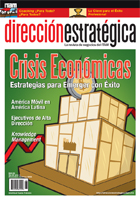

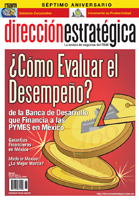

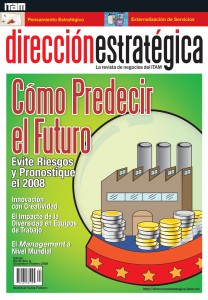






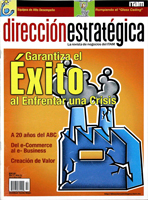


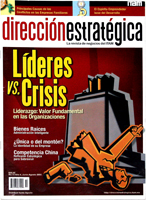






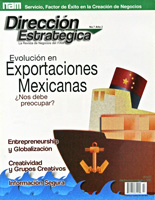






2 Comments
Me parece un artículo muy interesante. De alguna u otra manera todos nos beneficiamos con la creación de nuevas empresas, tanto el gobierno por el pago de impuestos, como la sociedad por la creación de nuevos empleos y por supuesto también el emprendedor. Aunque debemos reconocer que el riesgo para estos últimos es alto.
Claro está que los emprendedores siempre buscaran el éxito, desafortunadamente un gran número falla en sus primeros intentos por diferentes razones, considero que entre las más comunes esta la falta de planeación, habilidad y destreza para administrar una empresa.
Sabemos que es inevitable cometer errores y cuando emprendemos, fallar es parte del proceso, el punto es analizar las causas que provocaron tales fallas y por lo tanto aprender de esas equivocaciones. Será más benéfico ver el fracaso como parte del proceso de aprendizaje y no como un resultado final.
Concuerdo con las escritoras de este artículo al mencionar que a los estudiantes se nos debe enseñar cómo prepararnos y cómo tomar ventaja de los errores y fracasos que enfrentaremos a lo largo de nuestras vidas profesionales.
Sin lugar a dudas ser un emprendedor es muy provechoso para todos y finalmente creo que vale la pena tomar el riesgo.
“El que no falla es porque no ha intentando nada” es una frase que una vez escuche de un antiguo jefe de departamento y creo que se adapta muy bien a esta lectura. El emprender un negocio tiene sus riesgos y en el riesgo se incurre mucho en la falla, pero es precisamente las fallas las que nos hacen replantear nuestras estrategias para mejor nuestra forma de trabajar o ver desde otras perspectivas las cosas, algunos lo llamamos experiencia.
One Trackback
[...] Fracasar para Triunfar, por Claudia González Brambila y Daniela Ruiz Massieu, via Dirección Estratégia, publicado: 14 de junio, 2012 Tu voto:Comparte esto:Correo electrónicoMásImprimirDiggMe gusta:Me gustaBe the first to like this. [...]